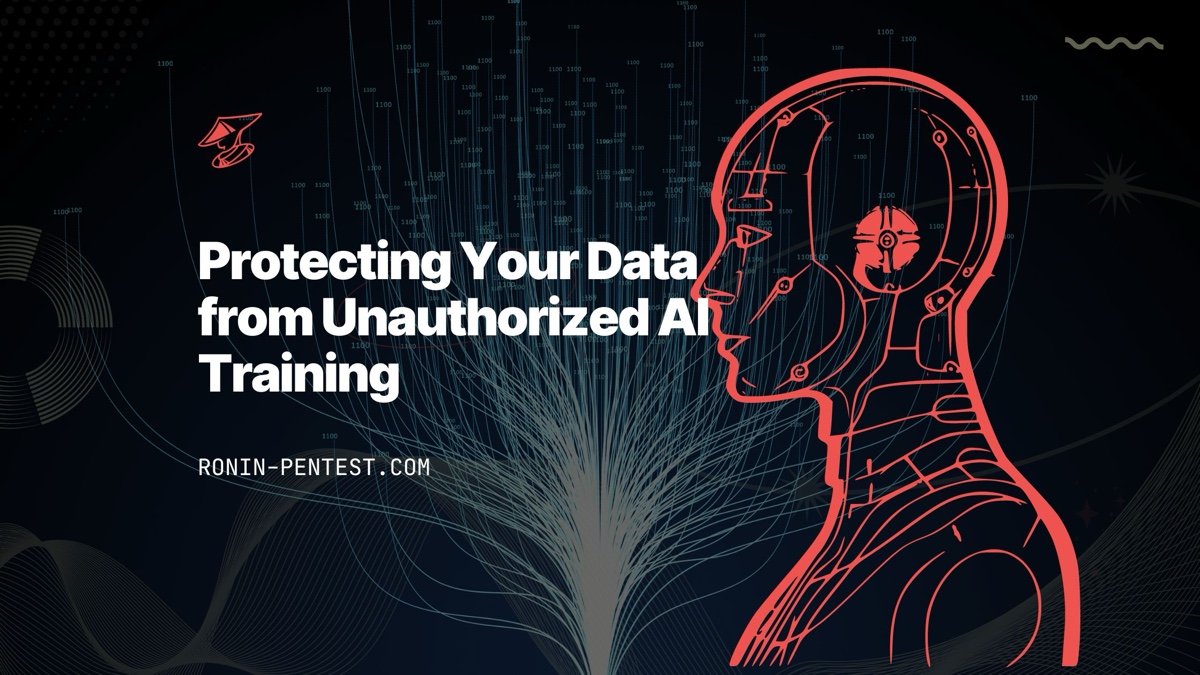Securing the Future: Protecting Your Data from Unauthorized AI Training
by Ben Brown | 06/17/2024

by Ben Brown | 06/17/2024

As the use of artificial intelligence (AI) becomes increasingly prevalent across industries, the security of the data used to train these systems has emerged as a critical concern. Unauthorized access and use of data for AI training can not only compromise personal and sensitive information but can also lead to significant ethical and legal issues. This comprehensive guide explores strategies to protect your data from being exploited by unauthorized AI training processes, ensuring your business remains secure and compliant.
Artificial intelligence systems are only as good as the data they are trained on. High-quality, extensive datasets can significantly enhance the performance of AI algorithms. However, this demand for data poses a significant risk, as it may tempt entities to obtain data through unauthorized or unethical means. Ensuring that your data is protected against such misuse is not merely a technical necessity but a moral and legal imperative.
The first line of defense in protecting data from unauthorized use is implementing robust access controls. These controls ensure that only authorized personnel have access to sensitive data and that their interactions with the data are logged and monitored. Techniques such as role-based access control (RBAC) and least privilege access policies can significantly reduce the risk of unauthorized data exploitation.
Encrypting data both in transit and at rest ensures that even if unauthorized parties access the data, they cannot use it. Encryption acts as a deterrent by making the decryption of data without the correct keys an arduous and often impractical task. Regularly updating encryption methods in line with current best practices is crucial as older encryption standards can become vulnerable over time.
When using data for legitimate purposes, including internal AI training, data masking and anonymization techniques can be employed to protect individual identities and sensitive information. These methods transform the data into a format that is useful for analysis but cannot be traced back to any individual, thereby reducing the risks associated with data breaches.
Maintaining comprehensive audit trails and implementing continuous monitoring policies are essential for detecting and responding to unauthorized access or abnormal data usage patterns. These systems can alert administrators to potentially malicious activities, allowing for swift mitigation actions to prevent data misuse.
Stay informed about and compliant with data protection regulations such as GDPR, HIPAA, or CCPA, depending on your location and industry. These regulations provide a framework for handling data that can help prevent unauthorized use. Additionally, legal measures such as non-disclosure agreements (NDAs) and data protection policies with partners and employees reinforce the legal protections of your data.
In the era of big data and AI, the security of data used for training AI systems is more important than ever. By implementing robust security practices, businesses can protect their data from unauthorized use and contribute to a more ethical and secure digital environment. It is not just about protecting data; it is about upholding the trust of your customers and the integrity of your business.
Start scanning your projects for free. You will get a free breakdown of your security status. Start securing your future now.
Get started